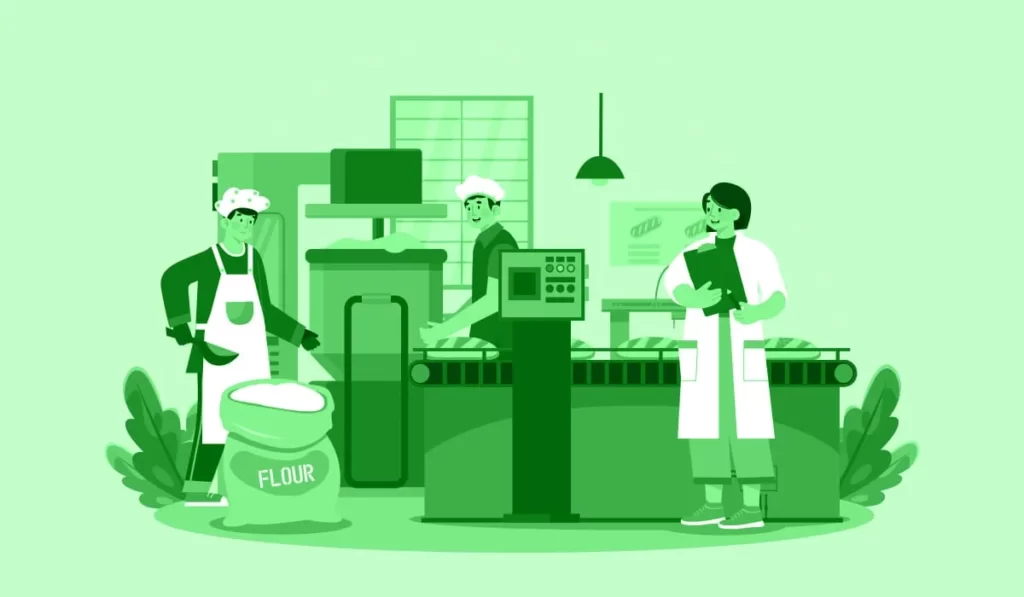It is easy to imagine that an immense quantity of food is discarded or wasted at restaurants throughout the country on a daily basis.

How ERP Systems Improve Productivity and Reduce Costs

It is easy to imagine that an immense quantity of food is discarded or wasted at restaurants throughout the country on a daily basis.
That portion of chicken you didn’t finish due to feeling too full, or those large pancakes left untouched by the neighboring table, all end up being thrown away.
Based on a recent study, approximately half a pound of food is wasted per meal in restaurants, either through leftovers on customers’ plates or in the kitchen itself.
The act of wasting food not only has detrimental effects on the environment but also leads to substantial financial losses for restaurants.
What if you could find a food inventory system that effectively reduced waste in your restaurant? There is clearly a potential for big profit gain if this is accomplished.

A food inventory management system, commonly referred to as a restaurant inventory management system or kitchen inventory management system, is a centralized platform that enables your restaurant to manage, automate, and strategize all aspects of inventory management activities.
Restaurant inventory management software enables your company to make better decisions in the future by offering useful data and insights.
This software helps you make better judgments when acquiring supplies, optimize your menu for enhanced profitability, reduce food waste, and provide a slew of other advantages.
Waste management with restaurant POS system offers real-time insights into inventory levels, enabling efficient tracking and reducing food waste.
The systematic tracking and efficient administration of food and beverage supplies within a commercial kitchen is referred to as restaurant inventory management.
This encompasses tasks such as maintaining an inventory record of available ingredients, placing timely orders to replenish supplies when required, and closely monitoring usage patterns to prevent any unnecessary wastage.
Efficient restaurant inventory management is crucial for maintaining a balanced operation. Ordering too much can result in extra costs and squandered items while ordering too little can lead to consumer dissatisfaction and missed sales.
Restaurants use a variety of strategies to manage their inventory properly. To track inventory levels in real time, they integrate restaurant POS software with an inventory management system.
Hand counts on a regular basis help to ensure accuracy. Assigning constant personnel to handle inventory enhances consistency, accuracy, and error reduction.
Establishing a consistent inventory tracking schedule aids in determining reorder points and identifying most demand items.
Tracking and analyzing food waste data over time assists in identifying trends and making changes to reduce waste.
Restaurants can make use of extra ingredients by incorporating them into other meals, selling them at a discount, or finding new uses for them.
When stocking shelves or coolers, using the First In, First Out (FIFO) strategy guarantees that older foods are used first, lowering the danger of food waste.
These strategies work together to enable good inventory management, prevent waste, and add to a restaurant’s overall efficiency and profitability.
Now let’s have a look at all the benefits you will get by implementing proper inventory tracking software in your restaurant:
An effective system for managing restaurant inventory will furnish you with immediate, constantly updated data concerning your stock levels.
This information enables you to anticipate patterns, enhance menu optimization, and make other astute decisions.
By monitoring your inventory levels in real-time, you can consistently remain aware of precisely what needs to be replenished and when.
This aids in minimizing waste and guaranteeing that you have an ample supply of the items your customers desire.
Inventory tracking enhances ordering accuracy by giving real-time stock-level information. This helps businesses avoid understocking or overstocking, ensuring they order the right items at the right time, reducing costs, and enhancing operational efficiency.
Real-time stock updates are essential for efficient restaurant operations and waste control. Real-time stock notifications help you achieve this goal by notifying you when an item’s stock is running low.
By integrating waste management with restaurant POS system, establishments can enhance their inventory control, optimize food ordering, and actively contribute to reducing food waste.
Effective inventory management allows you to monitor ingredient usage and identify patterns, allowing you to design menus more effectively and estimate demand with better precision. This can lead to enhanced client satisfaction and sales.
Restaurants often face unpredictability, which can lead to untracked products if proper inventory management methods are not employed. Shrinkage may occur due to spoilage, robbery, breakage, leakage, and human errors.
By implementing strategic and efficient inventory management methods, you can pinpoint areas prone to shrinkage. Analyzing your inventory data enables you to precisely identify stock wastage locations. Subsequent measures can then be implemented based on the gathered data.
Implementing waste management with restaurant POS system allows businesses to streamline their operations and minimize waste, leading to cost savings and improved sustainability.
The benefits of effective inventory tracking include improved menu planning and ingredient utilization. Restaurants may identify popular and slow-moving goods by regularly monitoring stock levels in real-time, allowing them to strategically develop menus that maximize ingredient consumption.
This helps to reduce waste and expenditures. Furthermore, by analyzing inventory data, restaurants can uncover ingredient patterns, customer preferences, and seasonal fluctuations, allowing for menu changes that improve customer happiness while driving profitability.
Inventory monitoring in real time promotes better association with suppliers, resulting in more effective supply chain functioning. Companies can give their suppliers visibility into their inventory demands and optimize production and delivery procedures by sharing up-to-date inventory data.
With real-time tracking, organizations can convey their inventory requirements to suppliers more accurately and efficiently.
Suppliers can use real-time inventory data to understand demand variations and adjust production programs and order fulfillment procedures as needed.
Implementing inventory tracking in restaurants provides the advantage of utilizing the FIFO (First-In, First-Out) method.
FIFO guarantees that the earliest acquired or produced inventory is utilized or sold first, leading to a more precise assessment of inventory value and cost of goods sold (COGS).
By employing FIFO, restaurants can optimize profits by selling items at elevated prices during price hikes. Furthermore, FIFO establishes a methodical flow of inventory, enhancing the efficiency and organization of inventory management within restaurants.
Educating restaurant employees about FIFO is critical since it ensures effective inventory management practices.
Understanding and applying FIFO allows workers to properly prioritize inventory consumption and sales, resulting in correct valuation, optimized profitability, and streamlined restaurant operations.
Sustainable waste management entails handling garbage responsibly, from collection to transportation to disposal, without compromising the environment, human health, or future generations.
Its goal is to reduce natural resource use by reusing materials and producing as little waste as possible. It is our responsibility to preserve sustainability for the sake of our environment and future generations.
Sustainable waste management entails collecting, sorting, treating, recycling, and, when done correctly, creating energy and resources.
This technique generates job possibilities, improves waste management practices, and reduces the environmental effects of human activities, resulting in better air and water quality.
Furthermore, it decreases food waste, reduces substantial environmental expenses, and aids in the prevention of certain health disorders, hence improving overall human well-being.
Implementing restaurant POS solutions with effective inventory management capabilities is crucial for reducing food waste and promoting sustainable waste management with restaurant POS.
By utilizing advanced technology to track and monitor inventory levels, restaurants can optimize their ordering process, minimize overstocking, and ensure fresher ingredients.
This not only leads to significant cost savings but also reduces the amount of food that goes to waste. By prioritizing waste management through smart POS software inventory management, restaurants can make a positive impact on both their bottom line and the environment.